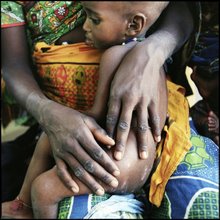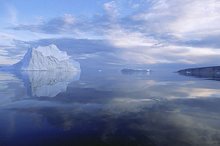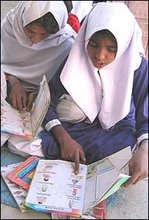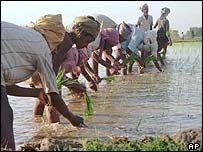PREAMBLE: One of our most visited blogs is entitled “Drawing attention to a global pandemic – diarrhoeal disease” (October 15, 2009). This addresses one of the more neglected issues on the international and global public health agenda, especially when compared with AIDS, Tuberculosis and Malaria and Vaccine Preventable Diseases (all of which are also important priorities). Compared to these, diarrhoeal disease strangely receives much less attention by many donor health agencies and their information outlets. Perhaps this is because some of the solutions so capital-intensive that some donors prefer to look the other way. Or perhaps it is because the problem is perceived to be “local” and does not significantly threaten developed countries with importation: onward transmission is not likely to occur in nations with advanced water and sanitation infrastructures. Yet diarrhoeal disease is one of the most severe burdens for many low income countries, vying with acute respiratory infections as the leading cause of child mortality, and simultaneously causing serious morbidity across the age spectrum.
In this issue of PacificSci Global Perspectives, we are therefore pleased to give visibility to real progress in addressing the long-standing lack of portable drinking water in many developing countries. Our source is a new report from WHO and UNICEF entitled Progress on Drinking Water and Sanitation 2012 Update. The WHO/UNICEF Joint Monitoring Programme for Water Supply and Sanitation (JMP), reports every two years on access to drinking water and sanitation worldwide and on progress towards related targets under Millennium Development Goal 7 (environmental sustainability). This 2012 report is based on data gathered from household surveys and censuses, including both recent and older data sets that have come to the attention of the JMP. The estimates presented here describe the situation as of end-2010 and supersede those of the JMP update published in March 2010.
Despite real progress however, challenges remain for some regions, particularly sub-Saharan Africa, especially in rural settings where the burden of poor water supply falls most heavily on girls and women. Equivalent progress also is not being made with regard to sanitation. At the other end of the spectrum (the world’s rich nations) we also need to take note of the recognition by the UN General Assembly, in 2010, of “water and sanitation as a human right" provides additional political impetus towards the ultimate goal of providing everyone with access to these vital services. Unfortunately, there were a number of abstentions, including Canada (Harper government). See: GA/10967 http://www.un.org/News/Press/docs/2010/ga10967.doc.htm This abstention is curious, to say the least, given that Canada’s indigenous people suffer disproportionately from poor water and sanitation.
PROGRESS ON DRINKING WATER AND SANITATION: 2010 UPDATE
Published jointly by UNICEF and World Health Organization 2012, the full report is available online as a PDF file [66p.]. The full reference and URL are supplied at foot of this page.
The report brings welcome news:
the Millennium Development Goals (MDG) drinking water target, which calls for halving the proportion of the population without sustainable access to safe drinking water between 1990 and 2015, was met in 2010, five years ahead of schedule.
However, the report also shows why the job is far from finished. Many still lack safe drinking water, and the world is unlikely to meet the MDG sanitation target. Continued efforts are needed to reduce urban-rural disparities and inequities associated with poverty; to dramatically increase coverage in countries in sub-Saharan Africa and Oceania; to promote global monitoring of drinking water quality; to bring sanitation ‘on track’; and to look… towards universal coverage.
Since 1990, more than 2 billion people have gained access to improved drinking water sources. This achievement is a testament to the commitment of Government leaders, public and private sector entities, communities and individuals who saw the target not as a dream, but as a vital step towards improving health and well-being. Of course, much work remains to be done. There are still 780 million people without access to an improved drinking water source. And even though 1.8 billion people have gained access to improved sanitation since 1990, the world remains off track for the sanitation target. It is essential to accelerate progress in the remaining time before the MDG deadline (2015).
As we approach the 2015 target date for the MDGs, WHO and UNICEF are addressing current monitoring challenges and those that lie ahead. The safety and reliability of drinking water supplies and the sustainability of both water supply sources and sanitation facilities are not addressed by the current set of indicators used to track progress. Accordingly, this report details work under way to refine both indicators and methods of monitoring, as part of the 2010-2015 JMP strategy. It also discusses the beginnings of a process to develop new water, sanitation and hygiene goals, targets and indicators beyond 2015, in alignment with the human right to water and sanitation and the mandate of the UN Special Rapporteur on the Human Right to Water and Sanitation.
OTHER HIGHLIGHTS
Huge disparities exist. While coverage of improved water supply sources is 90 per cent or more in Latin America and the Caribbean, Northern Africa and large parts of Asia, it is only 61 per cent in sub-Saharan Africa. Coverage in the developing world overall stands at 86 per cent, but it is only 63 per cent in countries designated as ‘least developed’. Similar disparities are found within countries – between the rich and poor and between those living in rural and urban areas.
Complete information about drinking water safety is not available for global monitoring. Systematically testing the microbial and chemical quality of water at the national level in all countries is prohibitively expensive and logistically complicated; therefore, a proxy indicator for water quality was agreed upon for MDG monitoring. This proxy measures the proportion of the population using ‘improved’ drinking water sources, defined as those that, by the nature of their construction, are protected from outside contamination, particularly faecal matter. However, some of these sources may not be adequately maintained and therefore may not actually provide ‘safe’ drinking water. As a result, it is likely that the number of people using safe water supplies has been over-estimated.
More than 780 million people remain unserved. Although the MDG drinking water target has been met, it only calls for halving the proportion of people without safe drinking water. More than one tenth of the global population still relied on unimproved drinking water sources in 2010. The last two decades have seen impressive increases in the use of both piped connections to a dwelling, plot or yard and other improved sources, such as protected dug wells, boreholes, rainwater collection and standpipes.
Wide variations are found in the rate at which regions have improved coverage. In general, regions in which coverage was already high have made more modest gains, rising by only a few percentage points over 20 years. Of note are the impressive gains in Eastern Asia, which added 23 percentage points, and the small decline in coverage in the Caucasus and Central Asia and in Oceania. The results show that the majority of countries lagging behind on the drinking water target are in sub-Saharan Africa. In fact, only 19 out of 50 countries in that region are on track to meet the target by 2015.
Regarding the number of people who have gained access to an improved drinking water source since 1990, the progress of India and China not only dominates their respective regions, but represents nearly half of the global progress towards the drinking water target. If only the developing world is considered, China and India represent more than half of the people who have gained access.
For the first time, data on the use of unimproved sources have been disaggregated into two categories: surface water and other unimproved sources. The latter includes unprotected dug wells, unprotected springs and water delivered by cart or tanker. Surface water includes water collected directly from rivers, lakes, ponds, irrigation channels and other surface sources. The use of surface water stands at a surprisingly high 3 per cent of the global population, or 187 million people. Most of these people – 94 per cent – are rural inhabitants, and they are concentrated in sub-Saharan Africa. In fact, 19 per cent of rural dwellers in sub-Saharan Africa and 39 per cent of rural residents in Oceania rely on surface water for drinking and cooking.
Source: UNICEF & WHO. Progress on Drinking Water and Sanitation: 2010 Update. Released 2012. http://www.who.int/water_sanitation_health/publications/2012/jmp2012.pdf Accessed March 16, 2012.
FROM a Great Canadian and World Statesman
"A great gulf... has... opened between man's material advance and his social and moral progress, a gulf in which he may one day be lost if it is not closed or narrowed..."
Lester B Pearson
http://nobelprize.org/nobel_prizes/peace/laureates/1957/pearson-lecture.html
Friday 16 March 2012
Subscribe to:
Posts (Atom)
INSPIRATIONAL WELCOME ............................... from T.S.Eliot's "Little Gidding"
If you came this way From the place you would come from... It would be the same at the end of the journey...
If you came, not knowing what you came for, It would be the same... And what you thought you came for Is only a shell, a husk of meaning... From which the purpose breaks only when it is fulfilled If at all.




















